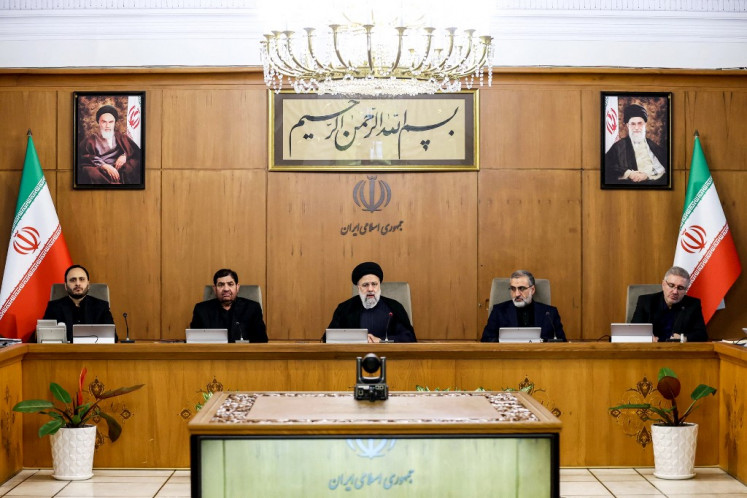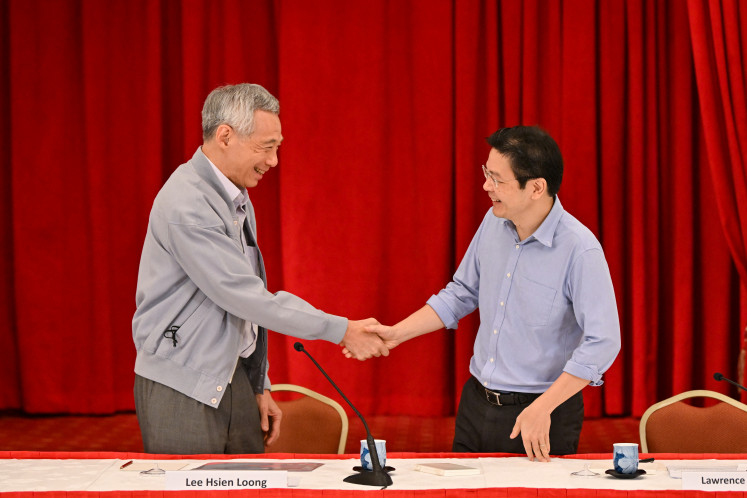Analysis: Banking sector: Bigger lending appetite on the menu
Following 2009’s slow lending growth of 8
Change Size

Following 2009’s slow lending growth of 8.7 percent, we expect most domestic banks to have bigger appetites to lend this year.
As banks have higher risk tolerance and positive view on the current economic outlook, they have started to somewhat loosen their underwriting criteria. This aggressive move has in fact been reflected in December 2009’s month-to-month loan growth of 2.8 percent, translating to a net addition of Rp 40 trillion (US$4.4 billion).
The low benchmark BI rate at 6.5 percent has also encouraged banks to relocate their earnings asset mix from Certificate of Bank Indonesia (SBI) to other attractive yielding assets, by growing their loan books or acquiring banks’ sub-debts. This cycle has also seen more pronounced strength in the banks’ liquidity condition. Loan to Deposit Ratio (LDR) registered at 74.6 percent at end December 2009 vis-à-vis the 77 percent peak in mid 2009.
We believe that 2010 loans are likely to grow at least 15 percent. This bodes well for the banking sector, on the back of strong 5.2 percent economic growth and low 5.6 percent inflation (excluding the 15 percent electricity tariff hike in July). It should be noted that Indonesia’s total loans covered only 26 percent of the domestic GDP, which is relatively low compared to the neighboring countries (e.g. the Philippines: 38 percent, Thailand: 86 percent and Malaysia: 110 percent).
Meanwhile, China’s 30.7 percent year-to-year growth in 2009 loans to reach US$7.3 trillion has encouraged the government to soak up lending by increasing the reserve requirement to 16 percent in January 2010 with a possible interest rate hike in the coming month.
On the demand side, loan appetite started to increase in December 2009, particularly for corporate and consumer segments. Higher working capital requirements due to higher commodity prices coupled with the need for capacity expansions would stimulate demand for loans while limited offshore funding would encourage Indonesian companies to source funds domestically.
Ironically, the delay in the government infrastructure projects, on the back of uncertain political conditions, might dampen loan growth for banks exposed to such projects.
Apart from increased domestic consumption, the rock bottom interest rate scenario (BI rate of 6.50 percent or -225 basis points (bps) year-to-date) has stimulated demand for automotive and housing sectors, which is boosting demand for consumer loans.
We have estimated the potential aggregate market for both two-wheelers and four-wheelers is likely to reach Rp 200 trillion in 2010. Meanwhile, Indonesia’s potential demand for housing remains strong, estimated at 740,000 units, while supply ranges between 200,000 and 300,000 units, with an estimated value of at least Rp 70 trillion.
Given the current favorable interest rate environment, we believe that third party funding is not an issue for most banks, complying with the LPS (Depository Insurance Institution) ceiling rate of the BI rate plus 50 bps. This will result in average third party funding this year falling lower than in 2009.
Concerns on asset quality have faded away in our view as gross Non Performing Loans (NPLs) have shown a declining trend to reach 3.8 percent at end December 2009 from a peak of 4.7 percent in mid 2009, mostly due to the improving economic outlook and the lower interest rate environment.
Meanwhile, NPLs from mortgages have traditionally been low compared to other types of loans, registering at 2.6 percent. This would explain why banks with high exposure to mortgages tend to carry low NPL coverage ratios, well below the industry’s average coverage of around 139 percent in 2009.
Additionally, concern over NPL rates has gradually subdued and liquidity should not be a major concern given the prolonged easing of monetary policy.
In conclusion, we believe that the increasing appetite of Indonesian corporates for loans this year will be well-supplied by ample liquidity given the current relatively relaxed monetary policy, creating promising prospects for the banking sector outlook.









